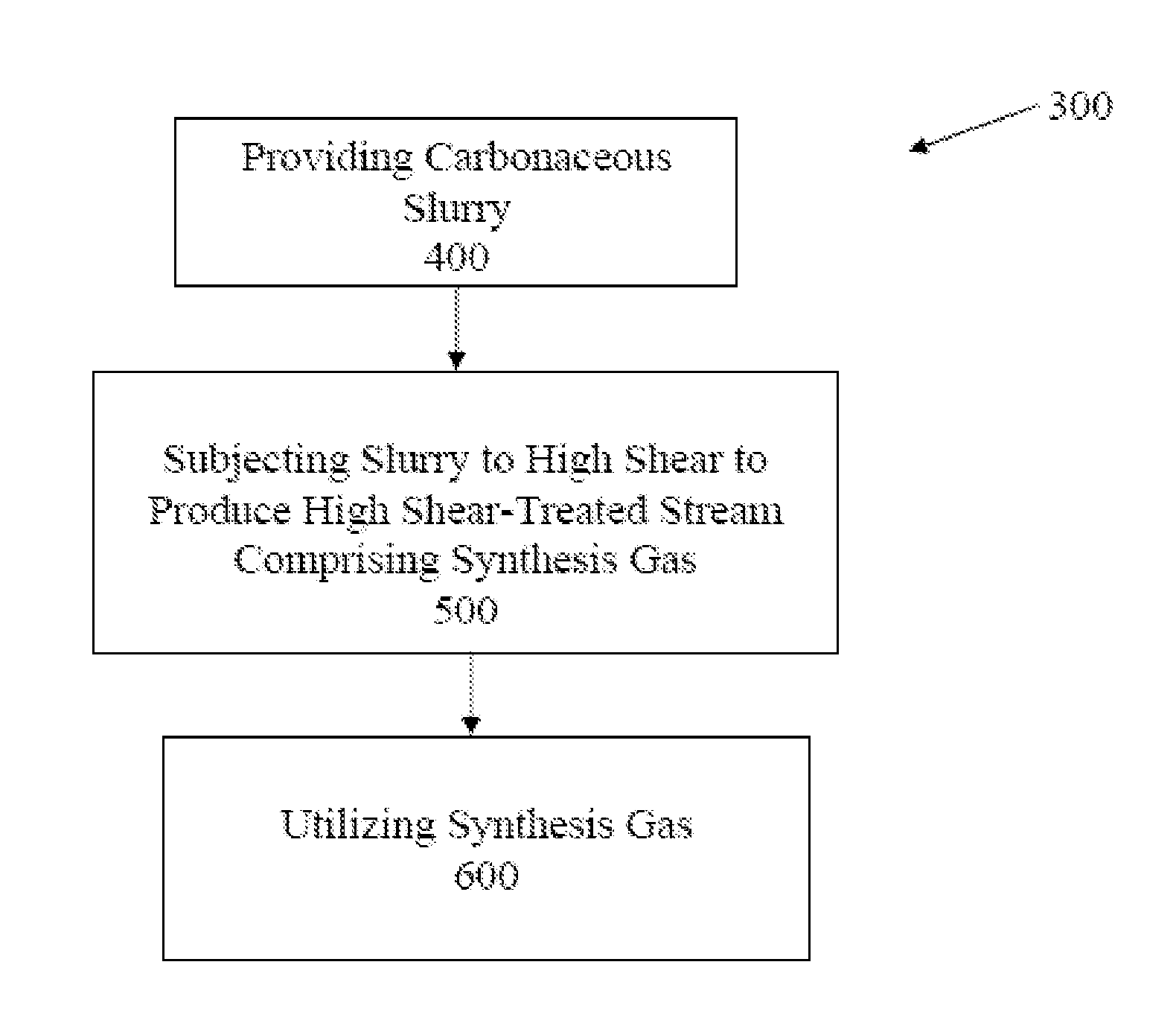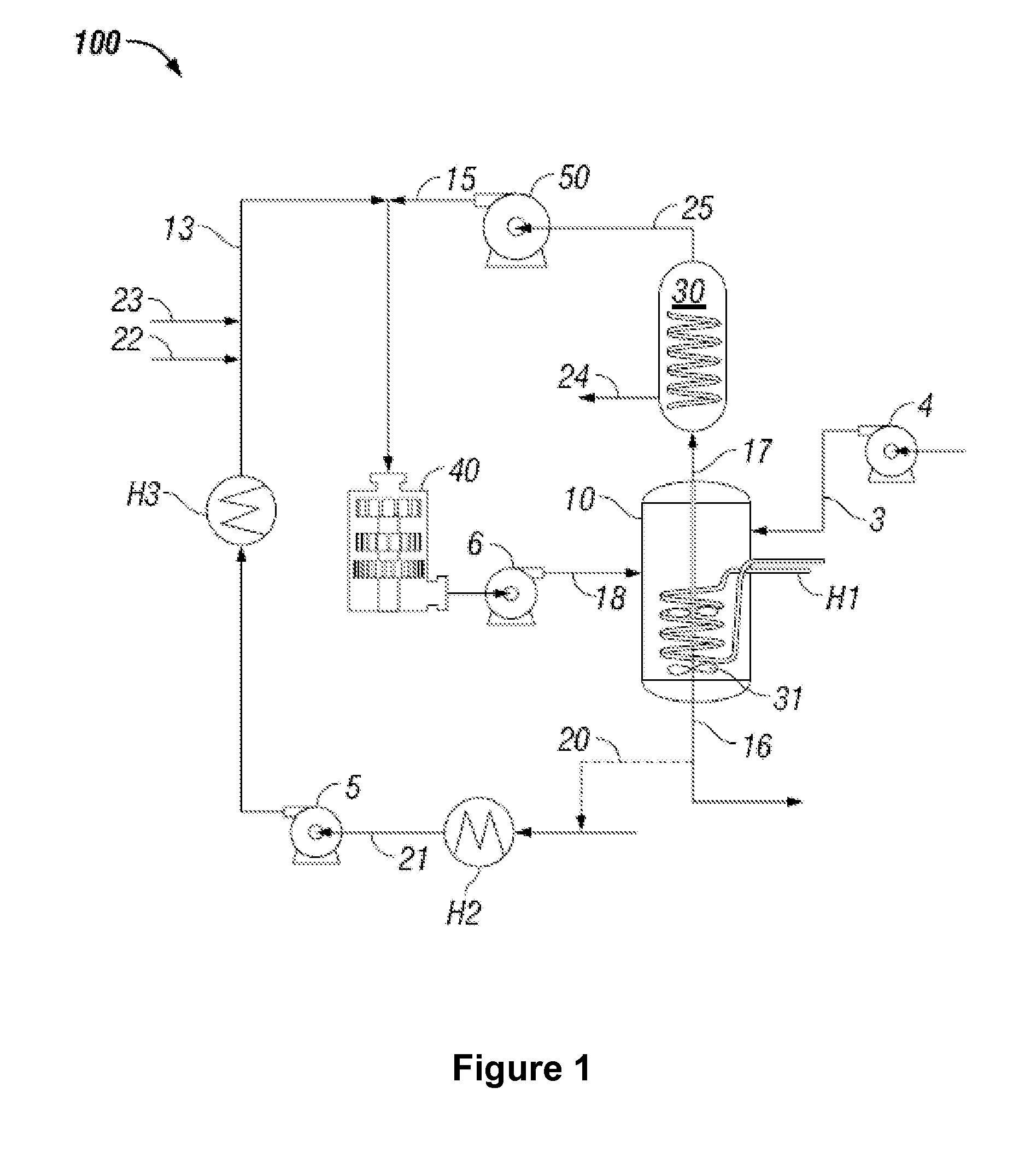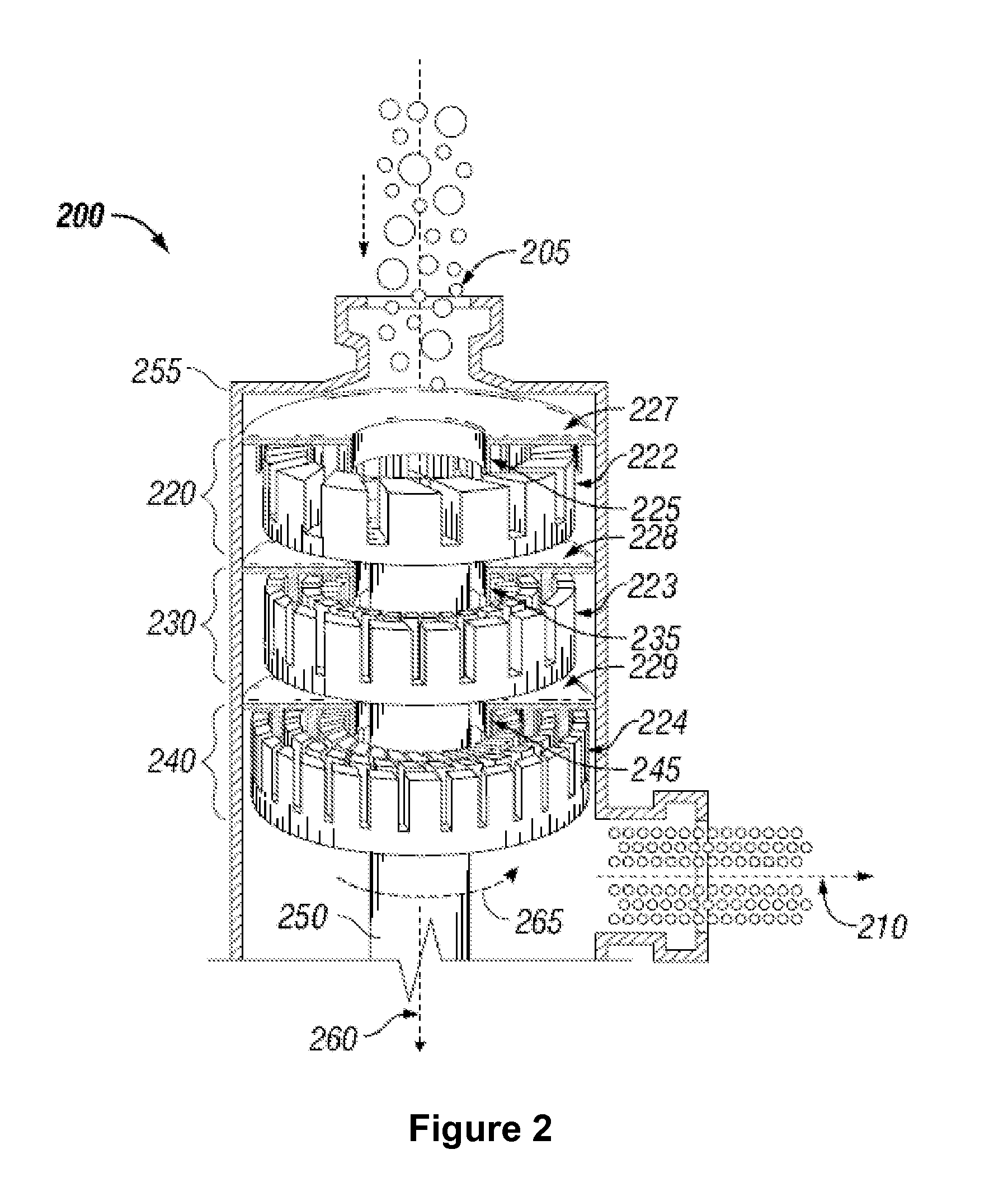Gasification of carbonaceous materials and gas to liquid processes
a technology of carbonaceous materials and gas to liquid processes, which is applied in the direction of biofuels, transportation and packaging, combustible gas production, etc., can solve the problems of not being easily adaptable to transportation, not having a net reduction in carbon, and increasing the production of carbon dioxide, so as to increase the rate of multi-phase processes and reduce overall costs , the effect of increasing the product per catalyst uni
- Summary
- Abstract
- Description
- Claims
- Application Information
AI Technical Summary
Benefits of technology
Problems solved by technology
Method used
Image
Examples
example 1
High Shear Reaction of 2:1 Methane:Carbon Dioxide with Ruthenium Carbonyl
[0325]A cold trap was positioned within system 100 as shown in FIG. 1. Five (5) grams of tri-ruthenium carbonyl was dissolved at 125° C. in ½ L of PEG. This ruthenium carbonyl / PEG was added to 1 L PEG. Three hours after initiation of the test, ruthenium carbonyl / PEG solution was injected into vessel 10 for a period of one hour.
[0326]Liquid product MBM-33-B (Liquid) was recovered from cold trap liquid 24 and analyzed for glycols. The results are presented in Table 2.
TABLE 2MBM 33B (Liquid)Test MethodComponentAmount, mg / LSW-846 8015D Non PurgeableEthanol484Organic CompoundsMethanol4637n-Propyl Alcohol44.7t-Butyl Alcohol7.08SW-846 8015M GlycolsEthylene Glycol27264Diethylene Glycol68170Triethylene Glycol123207Tetraethylene glycol142359SW-846 8260B Volatile1,2,4-0.826Organic CompoundsTrimethylbenzene1,3,5-0.574TrimethylbenzeneEthylbenzene0.193m- & p- Xylenes1.04MEK18.6Naphthalene0.601n-Butylbenzene0.143o-Xylene0.570...
example 2
High Shear Reaction of 2:1 Methane:Carbon Dioxide with Ruthenium Carbonyl
[0327]Sample MBM 34-2 was taken from cold trap gas 25, sample 34-1 from vessel 10 product liquid 16, and sample 34-PEG was a sample of virgin polyethylene glycol. The results were analyzed for hydrocarbons and glycols, and the results are presented in Table 3.
TABLE 3MBM 34-1, MBM 34-2, and MBM 34 PEGMBM 34-1MBM 34-2MBM 34-ReactorCold TrapPEGTest MethodComponentLiquidGasVirgin PEGEPA TO-15 VolatileBenzene—2.72—Organic Compounds inToluene—3.51—Air by GCMS, nLEthylbenzene—7.55—m- & p- Xylenes—8.81—Styrene—1.09—o-Xylene—9.17—1,3,5-—2.68—Trimethylbenzene1,2,4-—5.74—TrimethylbenzeneSW-846 8015D NonEthanolBRL*—BRLPurgeable OrganicMethanolBRL—BRLCompounds, mg / kgn-Propyl AlcoholBRL—BRLt-Butyl AlcoholBRL—BRLSW-846 8015M Glycols,Ethylene Glycol2780—BRLmg / kgDiethylene Glycol27216—27353Triethylene Glycol152328—165424Tetraethylene glycol402944—430688SW-846 8260B Volatile1,2,4-0.460—0.163Organic Compounds,Trimethylbenzenemg / k...
example 4
High Shear Reaction of 2:1 Methane:Carbon Dioxide and Methane Alone in Paraffinic Oil with Palladium Silica Catalyst
[0329]Samples MBM-35B Water and 35-TagA Water were taken from the cold trap 24 as indicated in Appendix A hereinbelow. The results of the analysis thereof are presented in Table 5.
TABLE 5MBM 35-B Water and MBM 35-TagA WaterMBMMBM 35-B35-TagACold ColdCold TrapTest MethodComponentTrap LiquidLiquidSW-846 8015D Non-2-PropanolBRL*BRLPurgeable OrganicEthanol26482036Compounds, mg / LIsobutyl Alcohol66.941.4Methanol11471602n-Butanol881828n-Propyl Alcohol14881180sec-Butyl Alcohol474447t-Butyl Alcohol58.472.5SW-846 8015MEthylene Glycol27612846Glycols, mg / LDiethylene Glycol28424747Triethylene Glycol25684367Tetraethylene glycol7741644SW-846 8260B1,2,4-BRLBRLVolatile OrganicTrimethylbenzeneCompounds, mg / L1,3,5-BRLBRLTrimethylbenzeneEthylbenzeneBRLBRLm- & p- XylenesBRLBRLMEK386783NaphthaleneBRLBRLn-ButylbenzeneBRLBRLn-PropylbenzeneBRLBRLo-XyleneBRLBRLXylenesBRLBRLTolueneBRLBRLTX 1005C...
PUM
| Property | Measurement | Unit |
|---|---|---|
| speed | aaaaa | aaaaa |
| diameter | aaaaa | aaaaa |
| speed | aaaaa | aaaaa |
Abstract
Description
Claims
Application Information
 Login to View More
Login to View More - R&D
- Intellectual Property
- Life Sciences
- Materials
- Tech Scout
- Unparalleled Data Quality
- Higher Quality Content
- 60% Fewer Hallucinations
Browse by: Latest US Patents, China's latest patents, Technical Efficacy Thesaurus, Application Domain, Technology Topic, Popular Technical Reports.
© 2025 PatSnap. All rights reserved.Legal|Privacy policy|Modern Slavery Act Transparency Statement|Sitemap|About US| Contact US: help@patsnap.com



